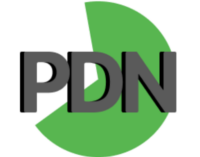5 Tips for Getting a Student Loan
Advertising
Navigating the process of securing a student loan can seem daunting, but understanding the essential steps can simplify your journey towards funding your education. Start by submitting the Free Application for Federal Student Aid (FAFSA) to determine your eligibility for federal loans and grants.
This is a crucial step that opens the door to various financial aid options, including federal student loans.

If federal loans do not fully cover your education costs, exploring private student loans may be necessary. Apply directly with banks, credit unions, or online lenders to find a loan that suits your needs. By comparing different lenders, you can secure a loan with favorable terms and interest rates.
Ensuring you have a good credit history can significantly enhance your chances of approval for private loans. Lenders often consider credit scores when determining eligibility and interest rates. Therefore, maintaining good credit is critical for accessing more financial aid opportunities.
Understanding Student Loans
Obtaining a student loan involves several critical considerations, including the type of loan and the differences between federal and private options. Each category offers unique benefits and potential drawbacks.
Types of Student Loans
Federal Student Loans: These are sponsored by the federal government and come in two main forms: subsidized and unsubsidized. Direct Subsidized Loans are available to undergraduate students with financial need, where the government pays the interest while you’re in school. Direct Unsubsidized Loans are available to both undergraduate and graduate students without the requirement to prove financial need. Interest accrues from the time the loan is disbursed.
Private Student Loans: Issued by private institutions such as banks, credit unions, or online lenders. These loans typically require a credit check and may have higher interest rates based on your creditworthiness. They can be used to bridge the gap if federal loans do not cover all your education expenses.
Federal vs. Private Student Loans
Interest Rates: Federal student loans generally have fixed interest rates set by the government. For the 2022-2023 school year, the rates were 4.99% for undergraduate subsidized and unsubsidized loans, 6.54% for graduate loans, and 8.05% for PLUS loans. In contrast, private student loans have variable rates that depend on your credit score and can vary significantly.
Repayment Plans and Protections: Federal loans offer multiple repayment options, including income-driven repayment plans and potential forgiveness programs. Private loans tend to have fewer repayment options and protections, making them less flexible if financial hardships arise.
Eligibility Criteria: Federal loans require completing the FAFSA, while private loans consider your credit history and might need a co-signer if your credit score is insufficient. The ease of obtaining federal loans and their fixed interest rates make them a preferred option for many students.
Securing the Best Loan for Your Education
To secure the best student loan for your education, focus on comparing loan providers, understanding interest rates and terms, and navigating the application process. By addressing each of these areas, you can find the most suitable loan options and ensure a successful funding experience for your college journey.
APPLY NOW!
Comparing Loan Providers
When comparing loan providers, consider both federal and private lenders. Federal loans often offer lower interest rates and flexible repayment options. The main types of federal student loans include Direct Subsidized, Direct Unsubsidized, and Direct PLUS loans.
Private lenders vary greatly in their terms and benefits. Evaluate their origination fees, repayment terms, and customer service. Some of the best college loans come from well-known financial institutions that cater specifically to student borrowers, offering competitive rates and extensive support.
Creating a comparison table can help you visualize differences. Here’s a simple format to use:
| Provider | Loan Type | Interest Rate | Fees | Key Benefits |
|---|---|---|---|---|
| Federal | Direct Subsidized | 3.73% | None | Financial flexibility |
| Private Bank A | Fixed/Variable | 4.45%-12.54% | 1%-3% | No prepayment penalty |
Interest Rates and Terms
Interest rates and terms significantly impact the overall cost of your loan. Federal student loans typically have fixed interest rates, which means your rate remains the same throughout the life of the loan. For instance, Direct Subsidized Loans for undergraduates currently have a 3.73% interest rate.
Private loans can have either fixed or variable rates. Fixed rates provide stability, while variable rates can fluctuate, sometimes starting lower than fixed rates but potentially increasing. Make sure to check the Annual Percentage Rate (APR) which includes interest and fees.
Understanding the length of repayment terms is crucial. Federal loans offer options like income-driven repayment plans, while private loans may have more rigid terms. Knowing these details helps you plan for future financial commitments.
Application Process
The application process for student loans varies between federal and private lenders. For federal loans, you need to complete the Free Application for Federal Student Aid (FAFSA). This form assesses your financial need and determines your eligibility for various federal aid programs.
Submit the FAFSA every year you wish to receive aid. Private loan applications typically require proof of income, credit history, and a co-signer. Many private lenders have online portals to streamline the process.
It’s essential to start early and gather all necessary documentation. Timeliness can make a significant difference in securing the best student loans. Be thorough and accurate in your applications to avoid delays or rejections.




